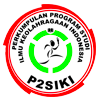The Role Of Pulmonary Vital Capacity, Hemoglobin Levels And Body Mass Index In Determining Maximum Oxygen Volume In Non-Athlete Students
Abstract
This study aims to examine the relationship between lung vital capacity, haemoglobin levels, and body mass index (BMI) in determining the maximum capacity of oxygen volume (VO2Max) in non-athlete students. The study used a correlational method involving 103 non-athlete students who attended exercise physiology courses, with an average age of ± 20 years. VO2Max was measured using the Multistage Fitness Test, lung vital capacity was measured using a spirometer, while BMI was calculated based on height and weight. Measurement of haemoglobin level was done using Easy Touch Omron device. Data analysis was conducted using the regression method. The results showed a weak correlation between lung vital capacity and VO2Max (R = 0.378). Haemoglobin levels also showed a weak correlation with VO2Max (R = 0.248), while the relationship between BMI and VO2Max was very low (R = 0.127). This study shows that lung vital capacity has a positive but weak relationship with VO2Max in non-athlete students. Haemoglobin levels also showed a weak association, while BMI had very little influence on cardiorespiratory fitness. These findings indicate that other factors may have a more dominant role in determining fitness levels in this population. The implications of this study may provide further insight into the factors that influence cardiorespiratory fitness in non-athlete university students
Downloads
References
BILLETT, H. H. (1990). Hemoglobin And Hematocrit . In Clinical Methods: The History, Physical, And Laboratory Examinations. 3rd Edition. Https://Doi.Org/10.5120/Ijca2016910339
Crump, C., Sundquist, J., Winkleby, M. A., Sieh, W., & Sundquist, K. (2016). Physical Fitness Among Swedish Military Conscripts And Long-Term Risk For Type 2 Diabetes Mellitus. Annals Of Internal Medicine, 164(9), 577. Https://Doi.Org/10.7326/M15-2002
Das, D. (2023). Exercise Capability With Total Body Fat Percent &Amp; Skeletal Muscle Percent In Male Students Aged 18 - 25 Years: A Correlational Study. JRTDD. Https://Doi.Org/10.53555/Jrtdd.V6i9s.2635
Döbele, T., Schwirtz, G., Gahl, B., & Eckstein, F. S. (2010). Mini ECC Vs. Conventional ECC: An Examination Of Venous Oxygen Saturation, Haemoglobin, Haematocrit, Flow, Cardiac Index And Oxygen Delivery. Perfusion, 25(3), 125–131. Https://Doi.Org/10.1177/0267659110369852
Hada, S. L., S, A., & Gautam, K. (2013). Cardiopulmonary Fitness Test Among Nepalese Students. Janaki Medical College Journal Of Medical Science, 1(1), 3–8. Https://Doi.Org/10.3126/Jmcjms.V1i1.7879
Jayaputra, V. M. B. (2024). Effect Of Chocolate Milk Consumption On Cardiorespiratory Endurance Of Central Java BPPLOP Games Athletes. Amerta Nutrition, 8(2), 295–304. Https://Doi.Org/10.20473/Amnt.V8i2.2024.295-304
Kelley, G. A., Kelley, K. S., & Pate, R. R. (2015). Exercise And BMI In Overweight And Obese Children And Adolescents: A Systematic Review And Trial Sequential Meta-Analysis. Biomed Research International, 2015, 1–17. Https://Doi.Org/10.1155/2015/704539
Khairani, R., Adriani, D., & Amani, P. (2021). Obesity Is The Most Influential Risk Factor Of Cardiopulmonary Endurance In Older Women. Zinc Supplementation Improves Heme Biosynthesis In Rats Exposed To Lead, 40(3), 254–262. Https://Doi.Org/10.18051/Univmed.2021.V40.254-262
Mahar, M. T., Welk, G. J., & Rowe, D. (2018). Estimation Of Aerobic Fitness From PACER Performance With And Without Body Mass Index. Measurement In Physical Education And Exercise Science, 22(3), 239–249. Https://Doi.Org/10.1080/1091367x.2018.1427590
Martin, B.-J., Aggarwal, S., Stone, J. A., Hauer, T., Austford, L. D., Knudtson, M. L., & Arena, R. (2012). Obesity Negatively Impacts Aerobic Capacity Improvements Both Acutely And 1‐Year Following Cardiac Rehabilitation. Obesity, 20(12), 2377–2383. Https://Doi.Org/10.1038/Oby.2012.119
Nopiyanto, Y. E. (2023). VO2Max Level Of Convicted Students At Special Prisons For Child Development Institution (LPKA) Class II Bengkulu. Kinestetik Jurnal Ilmiah Pendidikan Jasmani, 7(4), 2015–2024. Https://Doi.Org/10.33369/Jk.V7i4.29781
Oller, L., Dyer, W. B., Santamaría, L., Largo, C., Javidroozi, M., & Shander, A. (2019). The Effect Of A Novel Intravenous Fluid (Oxsealife®) On Recovery From Haemorrhagic Shock In Pigs. Anaesthesia, 74(6), 765–777. Https://Doi.Org/10.1111/Anae.14627
Pinzon, R. (1998). Hubungan Indeks Massa Tubuh Dengan Kapasitas Vital Paru-Paru Golongan Usia Muda. Bul. Penelit. Kesehatan.
Rusanov, V., Shitrit, D., Fox, B. D., Amital, A., Peled, N., & Kramer, M. R. (2008). Use Of The 15-Steps Climbing Exercise Oximetry Test In Patients With Idiopathic Pulmonary Fibrosis. Respiratory Medicine, 102(7), 1080–1088. Https://Doi.Org/10.1016/J.Rmed.2007.12.031
Setty, P. V, Bv, P., & Doddamani, B. R. (2013). Correlation Between Obesity And Cardio Respiratory Fitness. International Journal Of Medical Science And Public Health, 2(2), 300. Https://Doi.Org/10.5455/Ijmsph.2013.2.298-302
Tan, Y. H., Lim, J. P., Lim, W. S., Gao, F., Teo, L., Ewe, S. H., Keng, B. M., Tan, R. S., Koh, W., & Koh, A. S. (2022). Obesity In Older Adults And Associations With Cardiovascular Structure And Function. Obesity Facts, 15(3), 336–343. Https://Doi.Org/10.1159/000521729
Tangkudung, J., Haqiyah, A., Puspitorini, W., Tangkudung, A. W. A., & Riyadi, D. N. (2020). The Effect Of Body Mass Index And Haemoglobin On Cardiorespiratory Endurance. International Journal Of Innovation, Creativity And Change.
Copyright (c) 2025 Tendy Roy, Eri Barlian, Donie Donie

This work is licensed under a Creative Commons Attribution-ShareAlike 4.0 International License.









